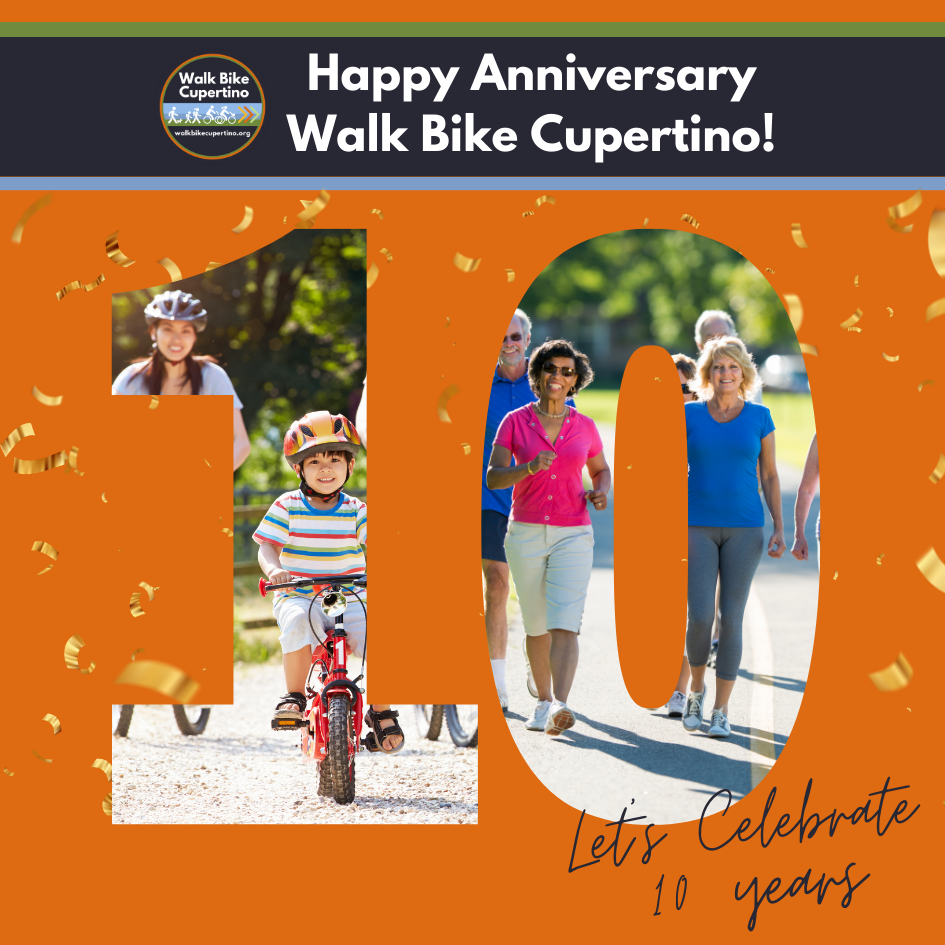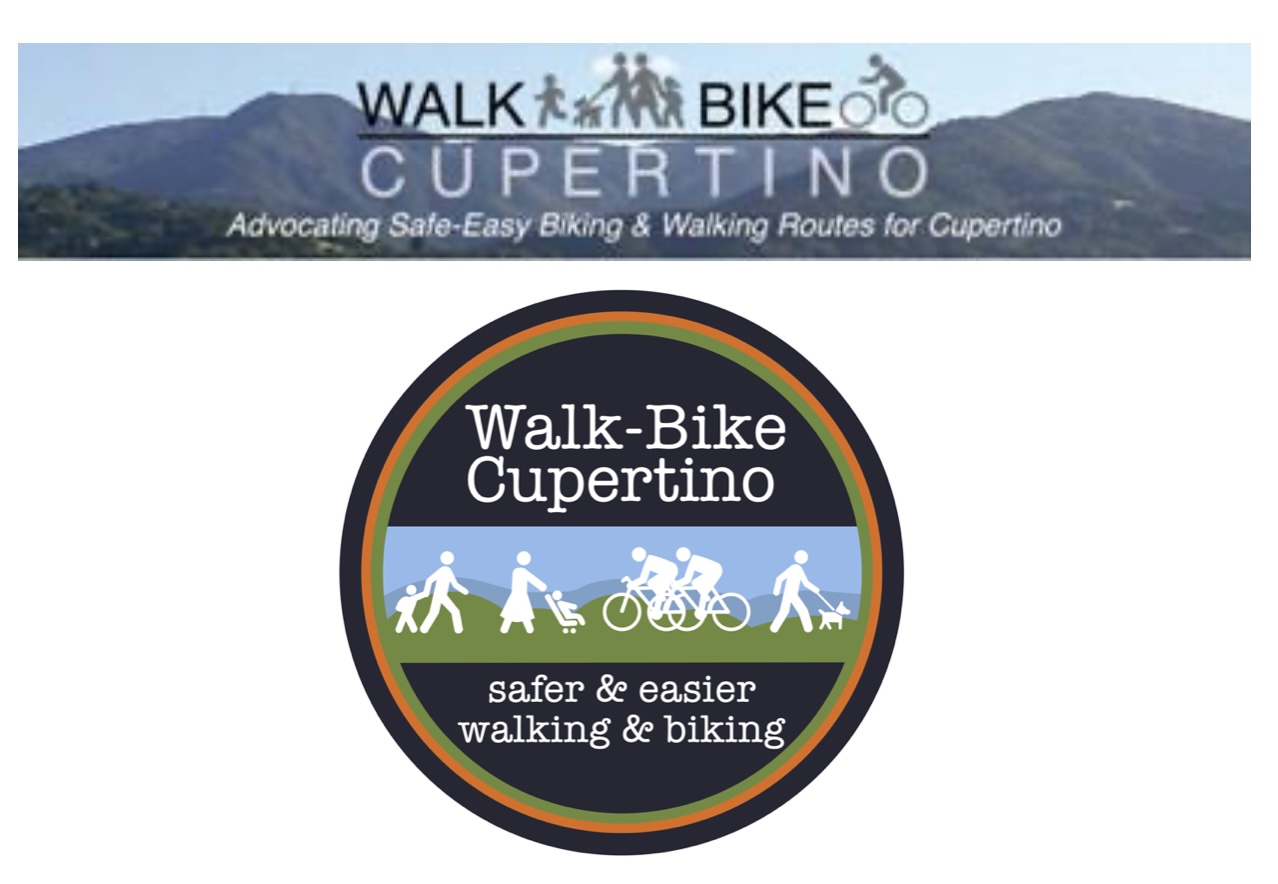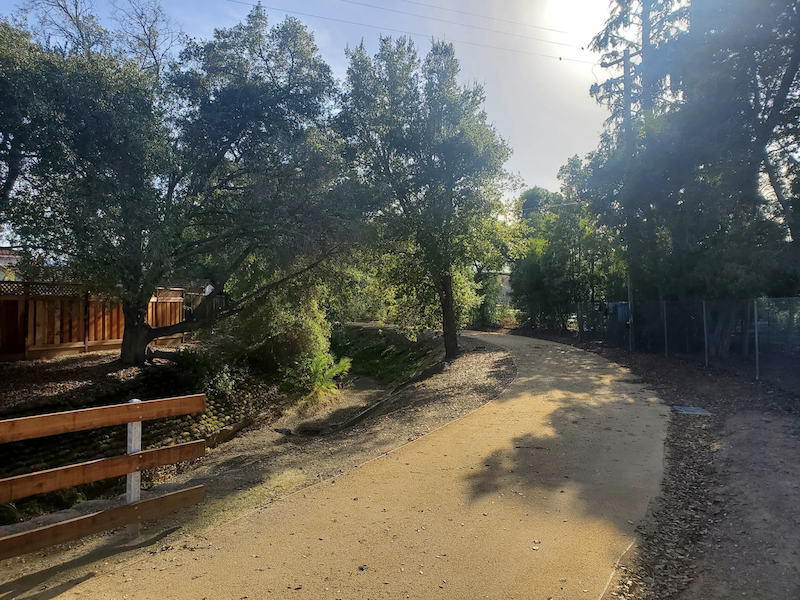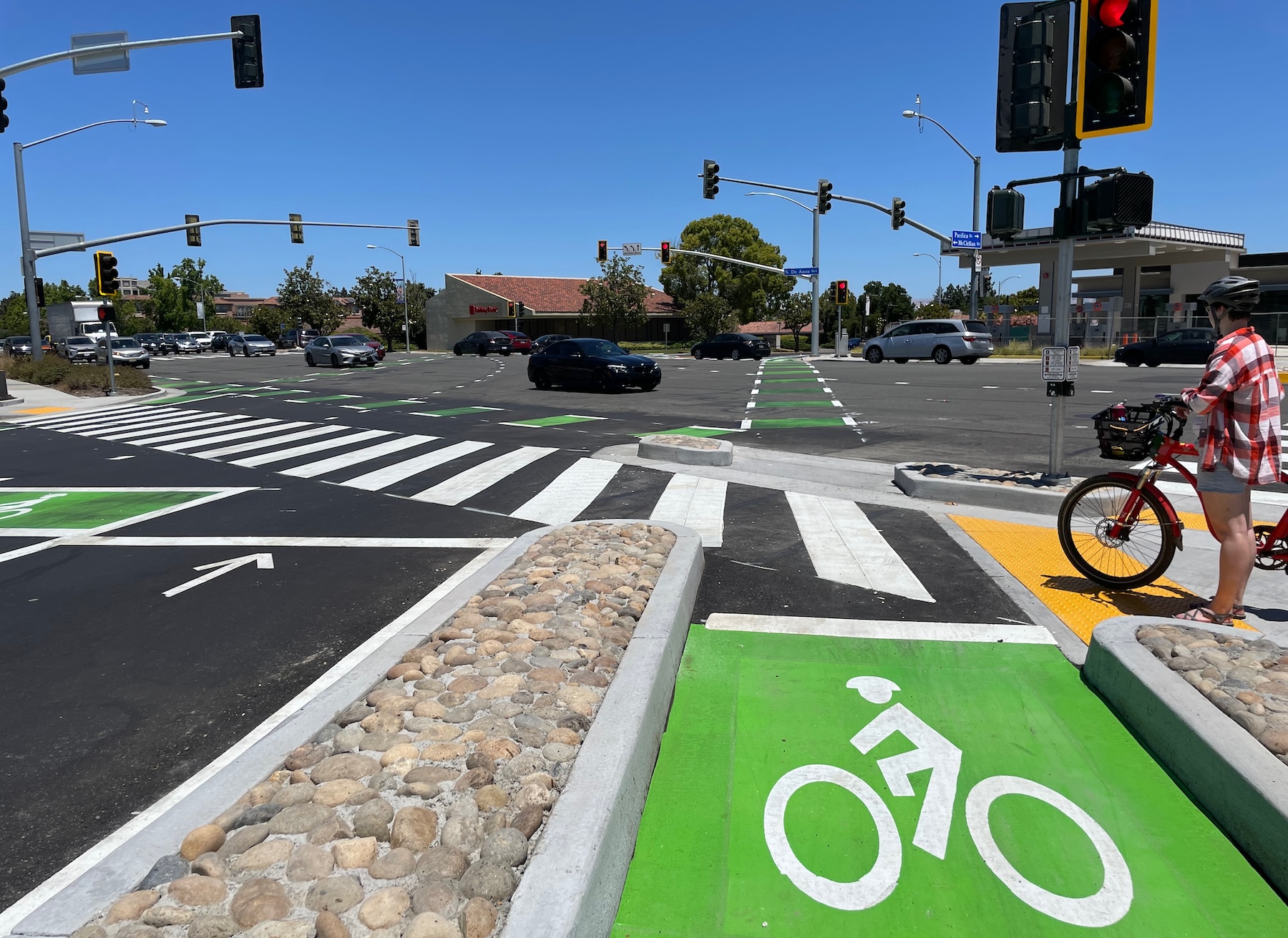In the fall of 2013, while I was serving on the Cupertino City Council, resident and avid biker Larry Dean and I visited City Manager David Brandt. Larry said our bike plan at the time lacked ambition and coherent vision, and wanted to fix that to make biking safer for students and adults alike. David agreed with Larry, and gave us a game plan based on his experience in other cities. He said we’d have to move a mountain; it would take an ambitious Bike-Ped Commission to create a new plan, supportive council members who shared the vision, plus a well organized group of advocates willing to fight for its implementation.


The two early logos of Walk Bike Cupertino: 2014 (top) and 2016 (bottom)
Each of us worked toward the effort. A few months later, in January 2014, I convinced my council colleagues to join me in appointing two Bike-Ped Commissioners, Pete Heller and Gary Jones, who advocated for an ambitious plan. In their first two meetings, they convinced their colleagues to support their aspirations. In parallel, Larry Dean created Walk Bike Cupertino, a volunteer resident organization devoted to improving walking and biking in Cupertino, with a handful of biking friends. Tragically, later that year, Monta Vista High student Ethan Wong was biking to school and was killed by a truck along McClellan Road. Everyone in the Monta Vista community and all council members were in shock. The efforts to create a more ambitious bike plan suddenly had wide support.
Cupertino started to make real change in 2015 while I was mayor. We put down three miles of green paint to highlight our existing bike lanes. We hired a top-notch consultant to help us come up with an ambitious bike plan. After wide-ranging community engagement and input, we passed the landmark 2016 Bicycle Transportation Plan.
Next was the implementation, and of course that was the hard part. This is where Walk Bike Cupertino really stepped up. They organized students, commuters, recreational bikers, and safety advocates to attend public meetings where opposition of better walking and biking infrastructure was plentiful and well organized. Walk Bike Cupertino truly started to flourish with the Regnart Creek Trail project, led by Jennifer Shearin and Seema Lindskog. More than fifteen hundred residents wrote, came to speak at City Council, or signed the petition asking for the new trail.

The Regnart Creek Trail today.

Crossing from McClellan protected bike lanes to Pacifica.
You know the rest of the story. Every time I bike down the protected bike lane on McClellan Road, past the civic center and onto the Regnart Trail on my way to Main Street, I see many people: grandparents walking hand-in-hand with grandkids, students biking on their way to school, and neighbors enjoying some fresh air and exercise. I see little kids skipping on the Linda Vista Trail from the park, a mom biking with her child in a trailer behind on Mary Avenue’s protected lanes, and students crossing Finch Avenue at the crosswalk with the added protection of bollards. Walk Bike Cupertino has advocated for many changes in our city and improved it for all.

The current Walk Bike Cupertino logo.
That’s how we moved a mountain together. The work isn’t done yet, and Walk Bike Cupertino keeps going. Congratulations on your 10-year anniversary, WBC, and here’s to the second decade of progress.
Rod Sinks is a current Fremont Union High School District (FUHSD) Trustee, and a former Mayor of Cupertino.
The information in this article is solely the opinion of the author and Walk-Bike Cupertino and does not reflect the opinions of any other organization or entity. For more information, contact WBC at info@walkbikecupertino.org.